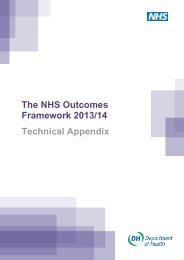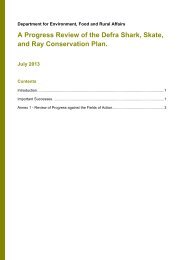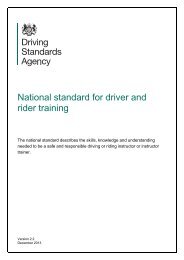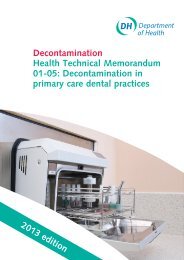A study of Patent Thickets (1.31Mb) - UK Intellectual Property Office
A study of Patent Thickets (1.31Mb) - UK Intellectual Property Office
A study of Patent Thickets (1.31Mb) - UK Intellectual Property Office
You also want an ePaper? Increase the reach of your titles
YUMPU automatically turns print PDFs into web optimized ePapers that Google loves.
74 A Study <strong>of</strong> <strong>Patent</strong> <strong>Thickets</strong><br />
This section has demonstrated that the triples measure <strong>of</strong> patent thicket density is a statistically<br />
significant measure <strong>of</strong> the structure <strong>of</strong> networks constituted between firms’ patent portfolios by<br />
critical references. In the following section we will analyze the development <strong>of</strong> patent thickets<br />
using this measure.<br />
7.3 Hazard models <strong>of</strong> entry<br />
This section <strong>of</strong> the appendix describes the hazard or survival models that are used to estimate<br />
the probability <strong>of</strong> entry into a technology. These models express the probability that a firm enters<br />
into patenting in a certain sector conditional on not having entered yet as a function <strong>of</strong> the firm’s<br />
characteristics and the time since the firm was “at risk,” which is the time since the founding <strong>of</strong><br />
the firm. Obviously in some cases, our data does not go back as far as the founding date <strong>of</strong> the<br />
firm, and in these cases the data are “left-censored.” When we do not observe the entry <strong>of</strong> the<br />
firm into a particular technology sector by the last year (2009), the data is referred to as “rightcensored.”<br />
We estimate two classes <strong>of</strong> “failure” or “survival” models: 1) proportional hazard, where the<br />
hazard <strong>of</strong> failure over time has the same shape for all firms, but the overall level is proportional<br />
to an index that depends on firm characteristics; and 2) accelerated failure time, where the<br />
hazard <strong>of</strong> entry (“failure”) is accelerated or decelerated by the characteristics <strong>of</strong> the firm.<br />
The first model has the following form:<br />
Pr( i first pats in j at ti | has no pats in j " s<<br />
t, X)<br />
i<br />
hX ( , t) = ht ( ) exp( Xb)<br />
i<br />
i<br />
where i denotes a firm, j denotes a technology sector, and t denotes the time since entry into<br />
the sample. h(t) is the baseline hazard, which is either a non-parametric or a parametric function<br />
<strong>of</strong> time since entry into the sample. The impact <strong>of</strong> any characteristic x on the hazard can be<br />
computed as follows:<br />
hX ( ,) t<br />
1 hX ( ,) t<br />
i<br />
i<br />
= ht ( ) exp( Xbb<br />
) or<br />
= b<br />
i<br />
x hX ( ,) t x<br />
i i i<br />
Thus if x is measured in logs, β measures the elasticity <strong>of</strong> the hazard rate with respect to x. Note<br />
that this quantity does not depend on the baseline hazard h(t), but is the same for any t. We use<br />
two choices for h(t): the semi-parametric Cox estimate and the Weibull distribution pt p-1 . By<br />
allowing the Cox h(t) or p to vary freely across industrial sector, we can allow the shape <strong>of</strong> the<br />
hazard function to be different for different industries while retaining the proportionality<br />
assumption.<br />
In order to allow even more flexibility across the different industrial sectors, we also use two<br />
accelerated failure time models, the log-normal model and the log-logistic model. These have<br />
the following basic form (see streg in the Stata Survival Analysis manual for details):

















